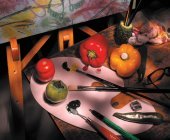|
How to shoot automobiles and cars on locationHere are some tips on how to shoot automobiles and cars on an outdoor and natural locations. Automobiles, cars and bikes are manufactured for outdoor use. Though these products can be shot in a studio, the product on outdoor location looks more realistic. Comparatively, it is easier to shoot a car on an outdoor location. As oppose to studio, where we have to take care of all fine details and place reflectors and soft lights for a clean and convincing shot, in outdoor shoot, we are free from all these technical set up. However, we have to take care of reflections, which are visible on the polished surface of a car. Any unwanted reflection of buildings, lamp post or street lights will spoil the pictorial appeal. Even the sun at an odd angle will be a problem. Therefore a choice of location, which is free from all these distraction is what we need. As we cannot shoot this product in direct sun light, we have to wait for dawn or dusk and set the product to capture the reflection of the soft light coming from the horizon and sky. Again, any dark colored or a black car will show this reflection more prominently, and we have to use this reflection in a creative way. A light colored or a white car will not show this reflection in a spectacular manner.
Shooting angle and camera height is the most important factor, which will show the product features in a beautiful way. Camera at eye level is most obvious height, and we are used to see these products at eye level height. Therefore we must experiment with slightly lower or higher angle. However, shifting the camera up or down will capture the angle, which is subject to the focal length of the lens we use. A wide angle lens will show the upper or lower angle in much more multiplied magnitude as compared to a tele lens. Be sure for each and every corners of the car, that should be absolutely clean. This also includes tires and wheel drums. However, a 4x4 on off road can be shot with dirt on it, which is a part of a realistic appeal, and how to shoot automobiles on an actual location. We can capture a shot of a moving car, which shows the product in much realistic way. For this, we can use panning (horizontal movement of camera) technique. Fix the camera on a sturdy tripod with pan and tilt head. Select smaller aperture so that the shutter operates on slower speed. Try to achieve a shutter speed of 1/30 or 1/15 of a second. If you cannot get this shutter speed at smallest aperture, then set the ISO value to its lowest. However, on a very bright day, even with lowest ISO and smallest aperture, we may not get these slow shutter speed. In such case, we need to use an ND filter on the lens. Now ask your friend or assistant to drive the car at about 25 MPH. When the car appear in the frame, follow it by turning the camera and click the shutter. Keep on following the car though you may not see it in an SLR camera viewfinder, (as the mirror is blocking the view) and the result will be the car in focus, wheels showing circular motion blur and background showing horizontal motion blur. Yes, this is a difficult shot to capture at one go and we may need to shoot fifty shots to find just one perfect shot. Focal length will play its role on the result. Result will also depend on the speed of the moving car. Adjust the camera settings as per your required shot. These are few tips on how to shoot automobiles on road. Read about how to shoot it in a studio Read about this product photography in detail:
How to shoot engineering products: Some useful consideration on how to photograph an engineering product How to shoot fashion accessories: Some tips and suggestion on how to photograph fashion accessories
How to shoot jewelry: Some tips on how to photograph jewelry How to shoot lingerie: Some tips on how to photograph lingerie and undergarments
Return back to product photography from how to shoot automobiles
|






